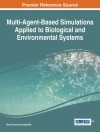Available as an e Book only.Direct analysis of potable water for pathogenic micro-organisms has generally been avoided by water suppliers because pathogens are frequently present intermittently and in low numbers. Direct analysis for pathogens would require concentration of large sample volumes and more complex analytical procedures both of which are expensive and currently considered not to be more protective of public health than using appropriate pathogen index organisms or surrogates. Human feces contain about 1012 bacteria per gram, hence Escherichia coli is always present in high numbers in domestic wastewater (around 109 cfu/g) and can be detected relatively cheaply by culture methods. E. coli has therefore become the chosen indicator for fecal pollution of water. The presence of E. coli indicates the likely presence of pathogenic micro-organisms; yet it is not an unequivocal indicator of the presence of pathogens. While E. coli is a valuable warning indicator in potable water supplies, its value in domestic wastewater and biosolids applications is reduced because the source water and sludge is always fecally polluted. Instead, an indicator more clearly linked to pathogen presence, an index organism, is required. An index organism is defined as a group or species indicative of pathogen presence, such as E. coli as an index organism for Salmonella. Due to the wide variety of illnesses generating fecal pathogens and the intermittent nature of such illnesses in a population, finding such a micro-organism is challenging. An approach more likely to meet with success is to find indicators which are removed or inactivated similarly to pathogens by wastewater and biosolids treatment processes. Such process indicators, called model organisms or surrogates, are defined as a group of organisms that demonstrate the efficacy of a process). When coupled with data collected over time on the numbers of pathogens in the matrix prior to treatment, can indicate the risk attached to using treated water. As climate change continues to place stress on water resources, communities are increasingly looking to recycled water as a supplementary water source. Hence identification of process indicators for recycled water is becoming imperative so that recycled water can be used appropriately so as to minimize risks. As pathogen reduction in primary and secondary wastewater treatment processes is not as great as in tertiary and disinfection treatment processes, the latter treatment processes have been the focus of this study. Similarly, as disposal of biosolids to landfill sites becomes increasing costly and inorganic fertilizer feedstocks decline, the beneficial use of biosolids is becoming more important. Identification of process indicators for biosolids will encourage these beneficial uses as the risk to human health can be better assessed. The search for process indicators is the primary objective of this project i.e. to identify representative pathogen – indicator pairs and to investigate their removal or inactivation in domestic wastewater and biosolids treatment processes commonly found in developed 1-2 countries. Identifying index organisms is a secondary objective, as the likelihood of finding such indictors is judged to be low. The new indicator(s) will complement or replace existing indicators and will allow improved assessment of risk to human health from wastewater and biosolids.
Judy Blackbeard & Paul Monis
Pathogen Risk Indicators for Wastewater and Biosolids [PDF ebook]
Pathogen Risk Indicators for Wastewater and Biosolids [PDF ebook]
Buy this ebook and get 1 more FREE!
Language English ● Format PDF ● ISBN 9781843393597 ● Publisher IWA Publishing ● Published 2010 ● Downloadable 6 times ● Currency EUR ● ID 5765670 ● Copy protection Adobe DRM
Requires a DRM capable ebook reader












